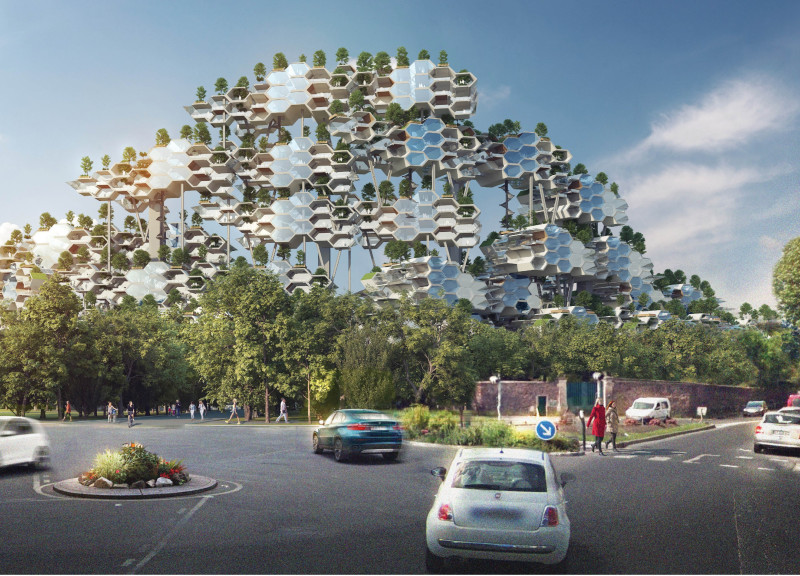5 key facts about this project
The project known as "A City of Life in the Garden of Death" addresses the significant housing shortage in Paris, where up to 1 million housing units are needed. Located near a historic cemetery, it creatively combines living spaces with a rich cultural backdrop. The design concept focuses on creating a respectful relationship between residential areas and the memorialized past, fostering a sense of community while honoring history.
Density and Spatial Organization
The proposal emphasizes the need to increase density in the urban environment. It aims to make the most of limited land without displacing people who already live in the area. The design features a compact footprint, utilizing prefabricated modules that create new housing developments while leaving the graves undisturbed. This careful layout allows for additional living spaces that meet the demand for housing while preserving the character of the neighborhood.
Community and Wellbeing
Incorporating green facades and shared roof terraces is central to enhancing the wellbeing of residents. These spaces encourage social interaction, allowing people to connect with one another and with nature. By applying biophilic design principles, the project seeks to address the pressures of urban living and provides opportunities for relaxation and communal activities. Engaging with nature helps to create a more balanced urban experience.
Structural Framework
The building structure is a multi-story system made from steel and concrete. This framework forms a vertical community, including both public and private modules. The modular design enables flexibility, accommodating different site conditions and community needs. The hexagonal shapes of the modules make it easier to stack units efficiently, thus reinforcing the aim for high-density living in a limited space.
The design stands out by combining residential areas with historical context, offering a unique setting where community and nature intersect. It provides a thoughtful approach to urban housing that respects the past while addressing current needs.



























